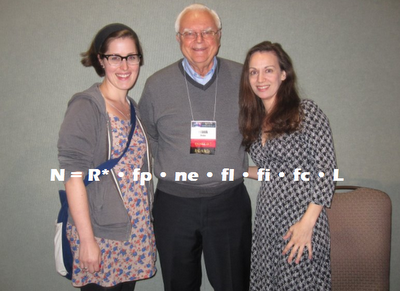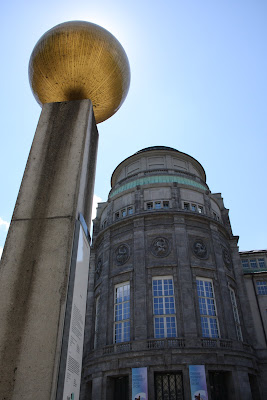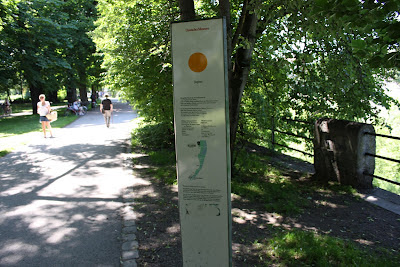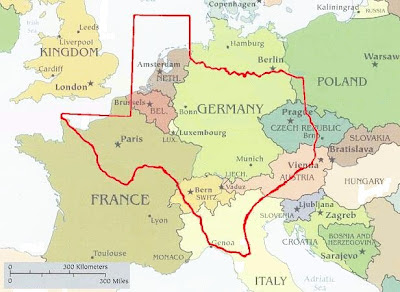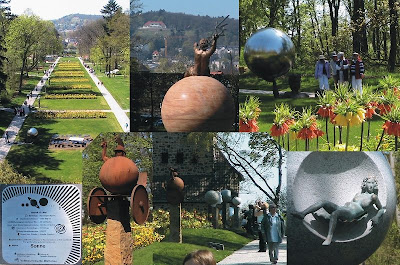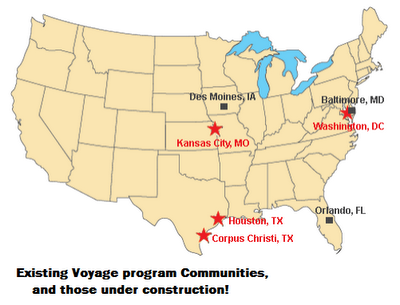
The title is self-explanatory, and this turned out to be quite a list! I'm still mystified at finding no solar system scale hikes in Russia, but I found 54 across Europe, Australia, Asia and Africa! Click on any of the individual links to find details about that walk... or click on any of thee pictures to see the interactive map of the world!
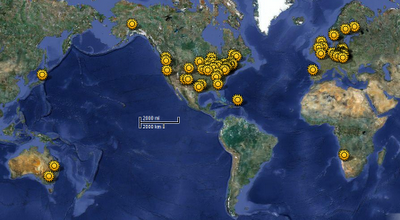 AUSTRALIA (Coonabarabran, New South Wales)
AUSTRALIA (Coonabarabran, New South Wales) 3-D planets accompanied by large billboards along the roads, creating the second largest scale model of the solar system. The
Sun is represented by the 37 metre telescope dome at Siding Spring Observatory, and a single path leads through the inner planets to Jupiter. Tourists can choose one of
five driving routes in various directions that lead to five different versions of all the outer planets.
Approximate Scale - 1 : 38 million (Total distance 410km or 254 miles roundtrip)AUSTRALIA (St. Kilda, Melbourne, Victoria)The "Melbourne Solar System" is to scale both in model sizes and distances. Starting with the Sun in the
Triangular Reserve just north of St. Kilda Marina, the nine planets run along the bicycle paths to Sandridge beach Port Melbourne.
Approximate Scale - 1 : 1 billion (Total distance 11.8 km or 7.3 miles roundtrip)AUSTRIA (Amstetten)Nine planets along a beautiful nature trail on the western edge of the city, scaled in both distance and planet size. Begin with the Sun at
Amstetten High School, and hike along the Mühlbach millstream "Black Path" to Pluto in Greinsfurth.
Approximate Scale - 1 : 1.5 billion (Total distance 8.4 km or 5.2 miles roundtrip)AUSTRIA (Bernstein, Burgenland)The Planet Trail begins at the Felsenmuseum Bernsteiner (rock museum) with a giant uniquely painted and strategically ripped iron sun, and up through Neptune in a circle around the village. Designed to come around within 250m of the starting point instead of a straight line, so you end up where you begin and don't have to backtrack. Planets are spheres atop serpentine boulders, connected by painted green and white markings.
Approximate Scale - 1 : 1.1 billion (Total distance 5.7 km or 3.5 miles roundtrip)AUSTRIA (Freistadt)Another long one! Driving or bicycling advised through the
11 stations of the Planet trail. Exact coordinates for all stops are at their GPS site.
Start at the "walking stone" in Freistadt, up to Zimmerhofer farm, the mountain Church of St. Michael, the Mitterbach, through an animal refuge, and end at the private observatory of Professor Wolfgang Woess in the town of Sandl. Includes the Asteroid Belt, Pluto and a station with audible pulsar sounds.
Approximate Scale not noted (Total distance 31.6 km or 19.6 miles roundtrip)AUSTRIA (Großraming) A lovely nature walk partly through town and partly through National Park, beginning at the
Großraming Municipal Office. Goes from Sun up to Neptune; Pluto is not included. Path continues on through Welser. Planets and distance both to scale.
Approximate Scale - 1 : 1 billion (Total distance 9km or 5.6 miles roundtrip) AUSTRIA (Hellmonsödt)
AUSTRIA (Hellmonsödt) Unique collection of planetary-themed playgrounds along a
circular trial around the town. The Sun is a giant playland of monkey bars! Great for picnics, after which one can use the
trail maps to visit the nine planets on the surround streets, coming back to the Sun from the opposite direction. Information boards also have info about Dwarf planets, Asteroid belt, Kuiper belt, comets, and the Oort cloud.
Approximate Scale - 1 : 1.5 billion (Total distance 6.5 km or 4 miles in circle)AUSTRIA (Königsleiten) Forest Königsleiten: Start at the metal relief sun on the wall of the Zeiss Planetarium Observatory, the highest in Europe! Planets and distance of the model solar system are to-scale; nine planets are marked by giant granite blocks, each showing information and reliefs. Trail proceeds through moors, meadows and bogs, with beautiful views of the peaks in National Park Hohe Tauern and the Salzach. Books also recommend the "Stargazer Restaurant" next to the planetarium!
Approximate Scale - 1 : 1.5 billion (Total distance 6km circular, ends again at Zeiss)AUSTRIA (Lichtenberg) Kinderplanetenweg, or "Kids Planet Trail" and also known as
"Sunny Side Up!" begins at the municipal office of Lichtenberg. Follow the inner planets along the paths between old and Neulichtenberg, where 20 different species of trees were planted and labeled for nature hikes. The outer planets and their data stands are deeper in the woods on Anniversary Route, ending with Neptune.
Approximate Scale - 1 : 1 billion (Distance 7 km circular, ends again at start point)AUSTRIA (Linz) Linz, where Johannes Kepler lived and worked (1612-1626), holds one of the largest solar system models in Europe, extending over the entire province of Upper Austria. Known as the "Kepler Planterium",
local organizations sponsored it as a "Land Art Project" where nine to-scale planetary sculptures were designed by renowned artists; including Pluto. Begins at the LAC observatory at the LAC along the Sonnenpromenade ("Sunwalk"), though website does not say if trails are a giant circle or linear paths. Maybe someday I'll get a guide at the LAC and check!
Approximate Scale 1 : 50 million (Distance not noted, but estimated around 300km)AUSTRIA (Rettenegg)University of Vienna Institute for Astronomy: The
"Heaven on Earth" trail stretches from Rettenegg to Stuhleck in the foothills of the eastern Alps, to-scale in both planet sizes and distance. Start at the Star Pavilion, where the constellations of the northern summer sky are presented with 400 star points. Follow the trail along the nine planets, also Earth's moon, each placed inside glass orbs atop text panels. All planets are in the position of a particular day: May 5, 2000.
Approximate Scale - 1 : 1 billion (Total distance 12 km or 7.5 miles roundtrip)AUSTRIA (Terfens)Church of Vomperbach: "The Path of the Planets" goes through the the Forchat (pine forest) of the lower Inn Valley in the Karwendel nature reserve of the Tyrolean mountains.
Starts with Sun outside Terfens at Vomperbach, and other planet stations are found inside Terfens and around Innbrücke, Wehle and Nepomuk.
Approximate Scale - 1 : 1 billion (Total distance 14 km or 8.7 miles roundtrip) AUSTRIA (Tullnerfeld)
AUSTRIA (Tullnerfeld) Vienna Woods: Begin at the Sun outside the church in Königstetten, and
choose one of two paths, north or south, to Mars. On the north trail, a path tackles the outer planets up to Muckendorf's Inn Rödel along the Danube River. On the south, two different trails of varying difficulties follow outer planets, ending with one planet Pluto outside Hintersdorf, and one Pluto far south in Passauerhof. The
many mapped trails to choose from can be hiked or bicycled.
Shorter two paths are each 10km or 6.3 miles roundtrip;
Larger path is 14km or 8.7 miles roundtrip though exact scales are not noted.
AUSTRIA (Vienna)Begin at Wittgenstein's in southwest Vienna, and easily find the planet plaques along the grand wall of the
gigantic Lainz Tiergarten near the star garden at George Berg. Planet pictures and distance all to scale. No map needed since the trail merely follows the wall, and find restaurants and the Wotrubakirche planetarium along the way. Inner planets closer to town, but finding Pluto requires going further into the woods near Gütenbachtor and the southern zoo, where the trail ends at Laaber gate. Earth's moon, Kuiper Belt and the Oort cloud are included.
Approximate Scale - 1 : 1 billion (Total distance 12 km or 7.5 miles roundtrip)AUSTRIA (Weiten) Südliches Waldviertel:
Plan Tete trail in the forest district known as "Valley of Sun Watches" because in addition to the solar system model, there are collections of
sun dials on display. Starts at the Sun opposite the old castle tavern, and follows the many planets past the sports arena, through cornfields and meadows; the Weitental lies between the two hills of the southern forest district, the Jauerling and the Ostrong. Includes Pluto and Earth's moon.
Approximate Scale - 1 : 16 billion (Total distance 7.2 km or 4.5 miles roundtrip)BELGIUM (St. Vith) Our Start at the Sun at the
railway bridge in the Klosterstraße and end on the bridge in Galhausen, underneath the Mariengrot. Planets, including Pluto, represented by multi-colored orbs atop natural boulders.
Approximate Scale - 1 : 1.5 billion (Total distance 6 km or 3.7 miles roundtrip)CANADA (La Malbaie, Québec)Observatoire Astronomique de Charlevoix: Walk the path along the St. Laurent river for free or with an astronomy guide for $10 daily at 3pm to see the scale reproduction of the solar system called "Strolling at the Speed of Light". Starting at the Sun near the solar telescope at the Fairmont le Manoir Richelieu Casino, follow the planets and their info panels up through Neptune. Pluto not included.
Approximate Scale - 1 : 1.5 billion (Total distance 6 km or 3.7 miles roundtrip)CROATIA (Zagreb)Croatian National Theatre: Beginning with a
huge metal Sun on Bogovićeva Street, travel through other various avenues and city squares to see to-scale metal planets on street corners, ending with Pluto under the Bologna underpass.
Tough map! Not sure of distances in all one trip.
Approximate Scale - 1 : 680 million CZECH REPUBLIC (Hradec)
CZECH REPUBLIC (Hradec) Kralovehradecky Kraj: Distance and dimensional scale models of planets with information boards along a trail in
Hradec Kralove near the Astronomical Society Observatory. Locations of all planets up to Pluto, plus Earth's moon and Halley's Comet are on the
handy guide map – showing markers on streets, parks, ponds, businesses, schools and a dam.
Approximate Scale - 1 : 1 billion (Total distance 13 km or 8 miles roundtrip)DENMARK (Durup) Sallingsund and Environs Museum:
"Planet Path Glyngøre" starts with a steel Sun in Glyngøre and goes out to Pluto in the Durup Square, with lovely views over Sallingsund along abandoned rail lines. Each planet is represented by a boulder monument, and a modern poster board has facts & figures, plus poetic verses about each planet in both English and Danish.
Approximate Scale - 1 : 1 billion (Total distance 12 km or 7.5 miles roundtrip)DENMARK (Fjerritslev)Fjerritslev Museum:The "planetenweg" in FjerritslevIn Fjerritslev, lies in the village of Han Herred in between the North Sea and the Limfjord, is a distance-scaled solar system replica containing all nine planets. Googled around in both English and Danish hoping to find details, but came up short on this one… anyone who has walked it? Please let me know any specifics!
Approximate Scale - 1 : 1 billion (Distance not found in any tour book resources)DENMARK (Lemvig) Lemvig Museum: "The Planetary Path" or
planetstien at the edge of Lemvig town park follows the Limfjord sound past Vinkelhage, Søgårdevejen, and Gjeller Odde. Beginning with the giant bronze sun, go through the rest of the nine planets of granite & bronze plinths, where all planets are to scale, and distance is also to scale. Includes Earth's moon, Ceres, Halley's comet, and three positions of Pluto, accounting for it's variable oval orbit.
Approximate Scale - 1 : 1 billion (Total distance 10 km or 6.2 miles roundtrip)ENGLAND (Otford, Kent)High Street: Begin at the center
Sun in the Recreation Grounds, whereby the planets fan out in a wide circle, as designated by the
walking map. The position of the planet pillars depict the precise position of the planets in their orbits at midnight on January 1, 2000. Includes Earth's moon, and Jupiter's moons Io and Europa; also shows relative distances to Proxima Centuari in Los Angeles and Sirius in Sydney, Australia, among other stars.
Approximate Scale - 1 : 4.5 billion (Spreads over village, not intended as a trail)ENGLAND (Somerset) Maunsel Lock: Two for one! According to the
tourist map for this double-walk, one can begin at the lock and choose two different paths through the solar system, north from the Sun to Pluto ending at Bridgwater, or south into Taunton. Each holds metal models set in stone monoliths, with descriptions of each planet.
Approximate Scale - 1 : 530 million (Distance 11 km or 6.8 miles in each direction) ENGLAND (York)
ENGLAND (York)Bishopthorpe: A great bicycle trip!
Start at the Sun near York College, follow the bike trails parallel to the A19 down to the town of Riccall. Planet descriptions and quizzes accompany the many raised, colorful orbs. Park facilities available for charity events and picnics.
Approximate Scale - 1 : 576 million (Total distance 20 km or 12.6 miles roundtrip)FINLAND (Helsinki)Ursa Astronomical Association: Scaled
planets known as the "Ursa Model", best seen by bicycle or bus #14. Starts with the Sun atop a pillar at the Patterimäki hill in Pajamäki suburb, which rises over 50 metres above sea level and is thus visible by binoculars even to the most distant planet model, Neptune (Pluto not included).
Approximate Scale - 1 : 1 billion (Total distance 9 km or 5.6 miles roundtrip)FRANCE (Rennes, Brittany)Le Chemin Solaire or the Solar Path is outside Rennes in
La Couyère, renamed "Starry Village" in 2011. Guides for the hike are available in the Community of Municipalities Mid-Vilaine and Semnon located in Bain de Bretagne, and has 3 color-coded levels of detail for the Sun and eight planets (Pluto not included): Orange for primary school children, green for teens and red for adults.
Approximate Scale - 1 : 2.2 billion (Spreads over village, not intended as a trail)FRANCE (Strasbourg, Alsace)International Space University: Planet walk extends along the northern bank of the Traun Traun bridge to the old power station Traun Marchtrenk. The starting point is a solar disk; the rest of the outdoor markers are planets in glass cases accompanied by data plaques.
Approximate Scale - 1 : 1 billion (Precise trail + distance not noted)GERMANYSee existing list of 107 Planet Walks & Solar System Models in Deustchland here!IRELAND, NORTHERN (Armagh) Armagh Observatory & Planetarium of Northern Ireland:
Trail known as the Astropark shows all the nine planets with orbs, and red and grey gravel stones to represent the Asteroid Belt. Grounds also include stone calendars and space for human orrery.
Approximate Scale - 1 : 30 billion (Total distance 8km or 5 miles roundtrip)ITALY (Brunico) The
planet walk of Bruneck, in both Italian and German, starts near the Liberty Bar with a concrete sphere of the Sun. Across a bridge and around Sternwaldele to Bierkellerweg where one can get a view of Bruneck Castle, then around paths leading to Reischacher road and into forest land. Path of nine planets, each represented by boards, ends in the park by the Odeon Cinema.
Very unique map!Approximate Scale - 1 : 1.5 billion (Total distance 8km or 5 miles roundtrip) ITALY (Sudtirolo)
ITALY (Sudtirolo) Santa Cristina, South Tyrol: the route of the former Val Gardena railway is now the promenade path of the
"Sentiero Planetario" or Planetary Trail. Nine planets set to scale in size and distance with information boards holding various facts about each celestial body, including Pluto.
Approximate Scale - 1 : 1,868 billionJAPAN (Tokyo)Mitaka Campus: starting at the National Astronomical Observatory of Japan (
NAOJ) building, follow the Sun to Saturn in the surrounding area, following informational boards. Pluto not included.
Scaled plastic planets along a
scaled hike along the Rhine River between Schaan and Bendern; start at the Sun at Rhine Park Stadium's parking lot and follow the Wuhrweg route toward Balzers.
Approximate Scale - 1 : 1 billion (Total distance 10km or 6.2 miles roundtrip)NAMIBIA - Swakopmund, Erongo Astro Farm Hakos: The
"Heavenly Namibia" was designed as a sister-model to an identical planetenweg in Freiburg, Germany. Nine iron orb planets with steel décor sit atop wooden stakes, leading from the
Hakos Guest Farm to the International Amateur Observatory (IAS).
Approximate Scale - 1 : 2.5 billion (Total distance 4 km or 2.5 miles roundtrip)POLAND (Jakuszyce)Orle: The "Model Ukladu Slonecznego" lies along a hiking trail
in Gory Izerskie between the Orle and Chatka Gorzystow mountain huts. Distances are to scale, but plaques along the way are not to-scale in terms of planet size, but simply set into natural rocks. Pluto not included.
Approximate Scale - 1 : 1 billion (Total distance 9km or 5.6 miles roundtrip)PORTUGAL (Estremoz)Science Center of Estremoz: The Scaled solar system, or
Sistema Solar à escala de Estremoz indeed covers the entire county of that name! Planets are represented with boards and are not to scale, but distances are calculated from the center of Estremoz, with Pluto out by the Évoramonte Castle. Starting at the Centro Ciência Viva de Estremoz at Convento das Maltezas, guides show where to find all markers, which include Pluto, and Ceres.
Approximate Scale - 1 : 4 billion (Circular, not intended as a trail)PUERTO RICO (Arecibo)Arecibo Observatory: Scale model of the solar system along trail that leads up to the observatory.
Scale and precise distance not known. SWEDEN
SWEDENStretches through most of Sweden… seriously!
This scale model of the solar system is currently the largest in the world. It starts at the Ericsson Globe "Sun" in Stockholm, the largest hemispherical building in the world. Inner planets are all found in Stockholm, and the outer planets lie north in other cities along the Baltic Sea, including Danderyd, Märsta, Alsike, Uppsala, Gävle, Söderhamn, Umeå, and Luleå. Represented among the nine planets are many of their satellite moons, the Asteroid Belt, Halley's Comet and the Swift-Tuttle comet, plus Dwarf Planets Eris and Sedna. The model's northernmost point is the Termination Shock zone of the heliosphere, at the Swedish Institute of Space Physics in Kiruna. One can follow the Sun to Termination Shock in a straight line, though secondary road trips would be needed to see the comets in cities toward the South of the country.
Approximate Scale - 1 : 20 million (Total distance 1,234 km or 766 miles roundtrip)SWEDEN (Örebro)Örebro Astronomi cal Association:
Begins with the Sun Monument at Olof Palme Square, and continues down Queen and Main Streets, which extend on a straight line through the business downtown area of central Örebro. Mercury, Venus and Mars marked with wall plaques. All other planets, including Earth and its moon, on stone pillars with steel planet models; continues on to Nikolai Church and the Iron Square, opposite the local castle, Örebro Slott. Ends with Neptune at the "Mushroom" water tower plateau, overlooking the city and the entire solar system path. Go to the local tourism office near the Sun Monument for guides and to-scale "Earth Pearls" to indicate size of our home planet as compared to the model.
Approximate Scale - 1 : 1.8 billion (Total distance 5 km or 3.1 miles roundtrip)SWITZERLAND (Aarau)Astronomical Association of Aarau: Starting with the Sun at the
corner of Hauptstrasse at Echo Linde, follow the nine planets, plus Earth's moon, through the south trail of the forest; ends in town of Kölliken
Approximate Scale - 1 : 1 billion (Total distance 12 km or 7.5 miles roundtrip)SWITZERLAND (Arosa) Pratschli: Start at the
bus Terminus at Pratschli, and follow beautiful labeled hike or guide map from Arosa Tourism office toward Pluto in Rot Tritt. The sun and nine planets are represented as models with information boards.
Approximate Scale - 1 : 2.8 billion (Total distance 4.4 km or 2.7 miles roundtrip)SWITZERLAND (Bülach) Kantonsschule Bülach: Start with the
Sun at Canton School Unterland, east of the city center. Booklet map available from the school shows the path along the planets (includes Earth's moon) through town and to Pluto at the
Bülacher Observatory.
Approximate Scale - 1 : 5 billion (1.5 hour hike)
SWITZERLAND (Burgdorf)Astronomical Society of Burgdorf:
Begin at the Binzbergplateau for a marvelous, all-green terrain nature walk through the solar system, north through Rüglen, a town called (no kidding) Egg, the Kaltacker schoolhouse, then the right fork toward Guetisberg, and from then on, all right forks through the forest to Rutschiweid and finally to Pluto in Wynigen.
Approximate Scale - 1 : 1 billion (Total distance 12 km or 7.5 miles roundtrip)SWITZERLAND (Emmen, Lucerne) Reusseggstrasse: Begin with the Sun at
Reuss Schachen Emmenbrücke, at the edge of the Emme and Ruess Rivers, and follow the river directly east. Planet boards and models up to Pluto are along the trails up to the Pearl Bridge / Reussbrücke in Grunwald. Includes Earth's moon and Ceres.
Approximate Scale - 1 : 1 billion (Total distance 11.8 km or 7.3 miles roundtrip) SWITZERLAND (Falera Mirasteilas)
SWITZERLAND (Falera Mirasteilas)Astronomical Society of the Canton of Grisons:
Start at the Sun along Er Liung just past via Cantunala, and follow the Falera Trail on the first part of the Panorama Route, which runs from about Falera Larnags to Laax-Murschetg. Includes all nine planets as individual sculptures, along stunning views of the Rhine Gorge. One trail leads on to Laax, another returns hikers to their starting point.
Approximate Scale - 1 : 4 billion (Total distance 3 km or 1.8 miles roundtrip)SWITZERLAND (Kreuzlingen) Kreuzlingen Observatory and Planetarium:
Two planetary paths, each at a flat rate of CHF 100, go from the Sun at the observatory to Pluto along various trails, featuring signs showing planet orbs to scale. Hike north toward Germany to Bodensee-Therme (North Lake Constance thermal baths), or hike south to Siegershausen with
trail maps to guide the way.
Approximate Scale - 1 : 1 billion (Total distance 12 km or 7.5 miles roundtrip)SWITZERLAND (Laufen) Nordwestschweiz: The Planetenweg Laufen is a
hiking path from Laufen to Liesberg. Both size of planet models and distance are to scale, but the distances are linear and the trails are not. So, the walk is longer than some others with identical scales. Can be walked, bicyled or driven. Includes Pluto and Earth's moon.
Approximate Scale - 1 : 1 billion (Total distance 26km or 16 miles roundtrip)SWITZERLAND (Locarno) Astronomical Society of the Canton of Ticino:
"Astrovia Locarno" begins with the Sun at the end Via al Lido on the River Maggia, and meanders along a green delta "quiet zone". Nine planets are represented with plexiglass, marble and steel models, accompanied by plaques with technical data. Cross the Morettinabridge to get to the outer planets, and through the Gerre Losone golf course. Also cross the footbridge on the bank of the River Melezza and onto the steeple in Tegna. Walk or bike through the green parks, and either hike back or take the Centovalli train to the starting point in Locarno.
Approximate Scale - 1 : 1 billion (Total distance 12 km or 7.5 miles roundtrip)SWITZERLAND (Monte Generoso)Vetta: Start with the 3-D Sun at the east forecourt of the hotel restaurants at
Generosa Vetta observation deck (the very top), and follow the planet billboards along the eastern trail, across the border into Italy. Includes Pluto.
Guide map available in Italian, German, French & English
Approximate Scale - 1 : 10 billion (Total distance 1.2 km or .75 miles roundtrip)SWITZERLAND (Regensberg)Lindenplatz: Starting with the 3.5 ton Sun (wow!) at the
Linden Rain Village, follow varying trails (distances are about the same, but they have levels of difficulty for beginning vs. advanced hikers) through the nine planets. Concrete panels holding graffiti-proof prints on concrete slabs were created by local school children. Pass the town of Hochwacht and cross the Canton of Zürich border into the Canton of Aargu. End point is the Horn Castle, or Burghorn.
Approximate Scale - 1 : 1 billion (Total distance 12 km or 7.5 miles roundtrip) SWITZERLAND (Ringgenberg)
SWITZERLAND (Ringgenberg) Brienzersee (Lake Brienz ): Another dual setup, where one may choose two paths, both with stunning panoramic views!
Begin with the large stone Sun at the Ringgenberg; the west trail of none planets through the Lake Thun Weissenau nature reserve ends with Pluto near Interlaken; the east trail along the massive lake, and then through small villages and forest lands, ends with another Pluto model near Oberried. Gorgeous visibility of surrounding mountains in all directions!
Detailed MAP available at tourism office.
Approximate Scale - 1 : 1 billion (Total distance 12 km or 7.5 miles each)SWITZERLAND (Saint-Luc) Le Chemin des Planètes, or The Planet Path,
begins at the FXB Observatory near Chandolin, and runs along a path in iew of the lovely Valais Alps. Model is to scale, but the walking distance is one scale and the scale of the nine planets is different: 1 cm to 1000 km.
Approximate Scale - 1 : 1 billion (Total distance 12 km or 7.5 miles roundtrip)SWITZERLAND (Solothurn) White Mountain:
"Planetenweg Weissenstein" begins with a model of the Sun at the Kurhaus Weissenstein, the heads west to the mountain station of the chairlift Oberndorf, then further the white stone on the Hasenmatt to Grenchenberg. Markers re reminiscent of road signs, though more ornate and with stone carvings. Includes Pluto.
Approximate Scale - 1 : 1 billion (Total distance 12 km or 7.5 miles roundtrip)SWITZERLAND (St. Gallen) Botanical Gardens: Begin with the
Sun at the Botanischer Garten, enjoy all the exotic plants and flowers while passing through the solar system scale model, which winds through Mörschwil to Glinzburg, and ends with Pluto in Obersteinach. Along the outer nature trails is a lovely view of Lake Constance.
Approximate Scale - 1 : 1 billion (Total distance 15 km or 9.3 miles roundtrip)SWITZERLAND (Zürich)Planetenweg Walking Trail from
Uetliberg mountain station to the
Adliswil-Felsenegg LAF cable car mountain station sports scale planet models and informational plaques set atop monoliths made from stones gathered on the Linth and Ruess glaciers. Local guides say to allow for a 2-hour hike, much of which is mountain terrain. Translation: uphill climbs!
Approximate Scale - 1 : 1 billion (Total distance 11.6 km or 7.2 miles roundtrip)
